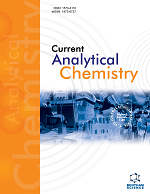-
s Prediction of Toxicity of Nanomaterials Using QSAR Approach
- Source: Current Analytical Chemistry, Volume 19, Issue 6, Jul 2023, p. 436 - 439
-
- 01 Jul 2023
Abstract
Building mathematical models based on the analysis of physiochemical systems is known as computational modeling. It may be used to combine different types of data and gain a thorough grasp of how they are correlated. Computational modeling techniques cannot replace true experimental techniques or function as a real mechanism. Despite this, they showed to be highly effective at displaying the outcomes for a suggested technique. Nanotechnology is a developing field of producing cost-effective nanomaterials. The toxicity of nano-based products may be significantly affected by the presence of metal impurities and latent waste. The contaminants introduced into the nano-products during manufacturing toxicate the cells. A limited number of techniques for the precise detection of nanotoxicity in nanomaterials has created interest in scientists for the development of newer computational techniques like QSAR. QSAR gives precise results based on ligand descriptors and mathematical algorithms to create functionalized bandwidth that detects toxicity at nano-levels. Now, widespread literature revealed QSAR workflow for the precise detection of various toxicants in nano-materials. The current study focused on the basic principles of QSAR in nanotoxicity predictions along with the applications and future prospects.


